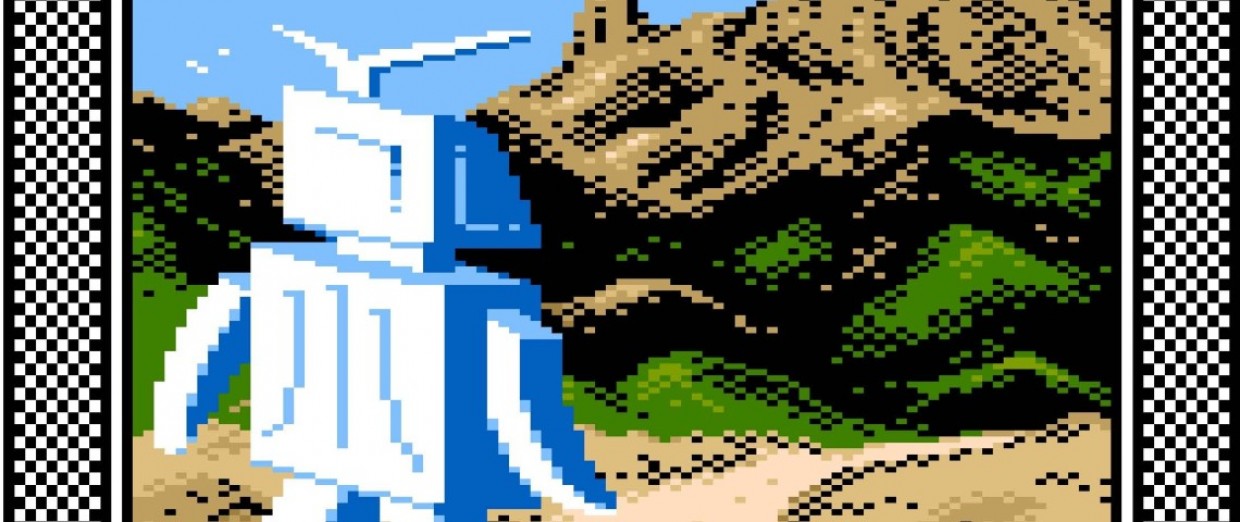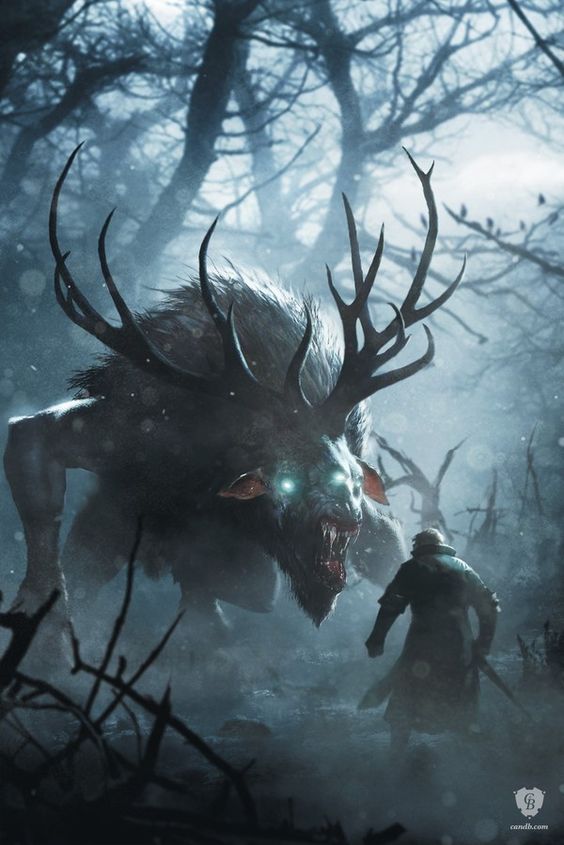There is a lengthy history of computer arts festivals, also known as demo parties, held in Russia over the last quarter century. For decades, once in a while people from all over the country gather together to compete in their ingenuity at getting what was once deemed impossible out of the old or new computer hardware and mere bytes of code. A few leading annual events has been established in the early years. One of them, creatively named CAFe (an acronym for Computer Art FEstival), was held in Kazan from 1999 to 2003. It went under the radar since, making the way for the everlasting Chaos Constructions (1999 — now) and DiHalt (2005 — now). After so long hiatus, the last year CAFe made a loud comeback, returning in full glory — at least by the number of prods released, if not in the scale of the event itself. Presentation of the compo entries went far into the night, with the last demos being shown at 6 AM to the popping eyes of the few hardy ones. There was my demo, too, and this is the story of its making.

305.26
Rating
Games and game consoles
Rock Paper Scissors
Show first
Rating limit
Level of difficulty
The one who resurrected Duke Nukem: interview with Randy Pitchford, magician from Gearbox
38 min
3.7KRUVDS and Habr continue the series of interviews with interesting people in IT field. Last time we talked to Richard «Levelord» Gray, level designer of popular games Duke Nukem, American McGee’s Alice, Heavy Metal F.A.K.K.2, SiN, Serious Sam, author of well-known «You’re not supposed to be here» phrase.
Today we welcome Randall Steward «Randy» Pitchford II, president, CEO and co-founder of Gearbox Software video game development company.
Randy started in 3D Realms where contributed to Duke Nukem 3D Atomic Edition and Shadow Warrior. Then he founded Gearbox Software and made Half-Life: Opposing Force, which won D.I.C.E in 2000. Other Gearbox titles include Half-Life: Blue Shift, Half-Life: Decay, Counter-Strike: Condition Zero, James Bond 007: Nightfire, Tony Hawk's Pro Skater 3, Halo: Combat Evolved and of course Borderlands.
The interview team also includes editor of Habr Nikolay Zemlyanskiy, Richard «Levelord» Gray, Randy’s wife Kristy Pitchford and Randy’s son Randy Jr.
Today we welcome Randall Steward «Randy» Pitchford II, president, CEO and co-founder of Gearbox Software video game development company.
Randy started in 3D Realms where contributed to Duke Nukem 3D Atomic Edition and Shadow Warrior. Then he founded Gearbox Software and made Half-Life: Opposing Force, which won D.I.C.E in 2000. Other Gearbox titles include Half-Life: Blue Shift, Half-Life: Decay, Counter-Strike: Condition Zero, James Bond 007: Nightfire, Tony Hawk's Pro Skater 3, Halo: Combat Evolved and of course Borderlands.
The interview team also includes editor of Habr Nikolay Zemlyanskiy, Richard «Levelord» Gray, Randy’s wife Kristy Pitchford and Randy’s son Randy Jr.
+31
+28
My Pascal compiler and Polish contemporary art
5 min
7KOrigins
Several years ago I wrote a Pascal compiler. The motivation was simple: as a teenager, I had learnt from my first programming textbooks that a compiler is a very sophisticated thing. This claim eventually became a challenge and required to be tested by experience.

ha.art.pl
First, a simplistic PL/0 compiler came into being, and later an almost fully-functional Pascal compiler for MS-DOS has grown from it. My source of inspiration was the Compiler Construction book by Niklaus Wirth, the inventor of the Pascal language. I don't care if Wirth's views are now considered obsolete and have no direct connections to the IT mainstream, or if the compiler design fashion has changed. It is enough to know that his techniques are still simple, elegant, and — last but not least — bring much fun, since it is more appealing to parse a program source with a handwritten recursive descent parser and generate the machine code, rather than to call yaccs, bisons and all their descendants.
My compiler's fate was not so trivial. It has lived two lives: the first one in my own hands, and the second in the hands of computer antiquarians from Poland.
+25
Videogame monsters: how to sow fear
4 min
3.2KTutorial

In video games, enemies are one of the key figures, without which a game might lose its meaning, and when it’s not only enemies, but terrifying monsters, they often create the chilling atmosphere intended by the developers. It’s impossible to imagine Silent Hill without the Pyramid Head, or Outlast without Chris Walker, and so on, you get the idea. Monsters are a cumulative image of a video game enemy, and it’s not necessarily an ugly demon or a giant spider: even an angry neighbor, like in Hello Neighbor, is a monster despite his human appearance.
This is where the reader probably asks:
what’s the point of this article?
+12
$10 million in investments and Wozniak's praise — creating an educational computer for children
14 min
2KWe interviewed Mark Pavluykovskiy — the creator of the Piper educational computer. We asked him about immigrating from Ukraine to the US, how he almost died in Africa, graduated from Princeton, dropped out of a doctorate in Oxford and created a product that deserved a praise from Satia Nadella and Steve Wozniak.

In mid-October the Sistema_VC venture capital fund hosted a conference called Machine Teaching, where creators of various educational startups assembled to talk about technical advancements.
The special guest was Mark Pavluykosvkiy, the creator of Piper. His company created an educational computer — a children’s toy that, using wires, circuit boards and Minecraft teaches programming and engineering to children. A couple of years ago Mark completed a successful Kickstarter campaign, got a couple of Silicon Valley investors on board and raised around $11 million dollars in investments. Now he’s a member of Forbes’ “30 under 30” list, while his project is used by Satia Nadella and Steve Wozniak, among others.
Mark himself is a former Princeton and Oxford student. He was born in Ukraine, but moved to the US with his mother when he was a child. In various interviews Mark claimed that he doesn’t consider himself a genius, but simply someone who got very lucky. A lot of other people aren’t so lucky, however, and he considers it unfair. Driven by this notion, during his junior year he flew to Africa, where he almost died.

In mid-October the Sistema_VC venture capital fund hosted a conference called Machine Teaching, where creators of various educational startups assembled to talk about technical advancements.
The special guest was Mark Pavluykosvkiy, the creator of Piper. His company created an educational computer — a children’s toy that, using wires, circuit boards and Minecraft teaches programming and engineering to children. A couple of years ago Mark completed a successful Kickstarter campaign, got a couple of Silicon Valley investors on board and raised around $11 million dollars in investments. Now he’s a member of Forbes’ “30 under 30” list, while his project is used by Satia Nadella and Steve Wozniak, among others.
Mark himself is a former Princeton and Oxford student. He was born in Ukraine, but moved to the US with his mother when he was a child. In various interviews Mark claimed that he doesn’t consider himself a genius, but simply someone who got very lucky. A lot of other people aren’t so lucky, however, and he considers it unfair. Driven by this notion, during his junior year he flew to Africa, where he almost died.
+26
Authors' contribution
marks 4449.0alizar 3982.6GeeksCat 2178.0Erwinmal 2164.0OldfagGamer 1881.5KatyaBelkina 1658.0lozga 1381.0shiru8bit 1289.0ragequit 1164.9ivansychev 1081.8
